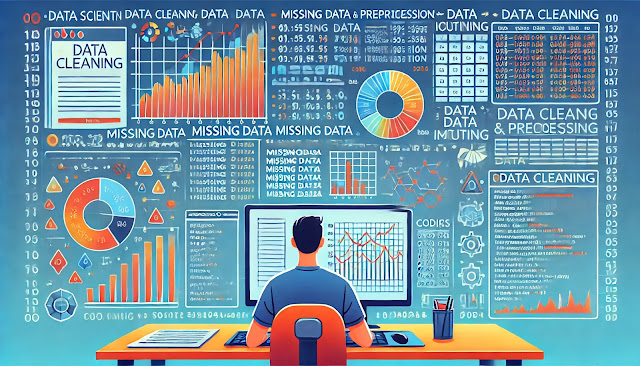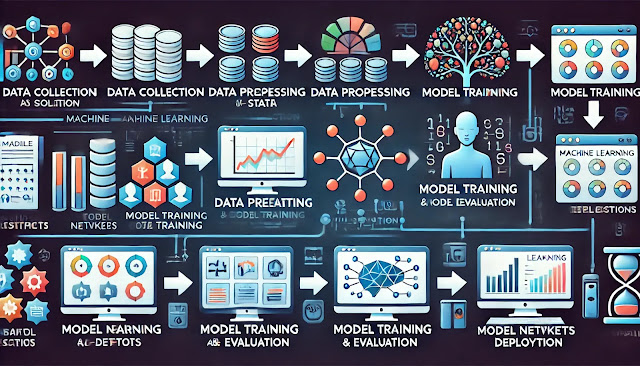Exploring Data Science: The Must-Learn Techniques in 2024
Data science continues to be at the forefront of technological innovation in 2024, driving insights and decisions across industries. As data continues to grow exponentially, the demand for skilled data scientists is higher than ever. To stay competitive and make the most out of this field, it's crucial to focus on key techniques that are shaping data science this year. Here's a guide to the must-learn techniques for 2024 that will empower you to excel in your data science career.
1. Advanced Data Cleaning and Preprocessing
Data cleaning is often cited as one of the most time-consuming tasks in data science. In 2024, the focus has shifted toward more advanced techniques in data preprocessing to handle the growing complexity of data.
- Data Imputation: Learning how to deal with missing values using advanced imputation techniques like K-Nearest Neighbors (KNN) and Multiple Imputation by Chained Equations (MICE) is crucial.
- Feature Engineering: Advanced feature engineering, such as feature scaling (normalization, standardization), polynomial features, and domain-specific feature extraction, continues to play a vital role in improving model performance.
- Automated Data Cleaning: Familiarize yourself with tools and libraries such as
DataRobotandPandas-Profilingfor automatic anomaly detection and data cleaning processes.
Why It's Important: High-quality data is the foundation of any successful data science project. Mastering these advanced data preprocessing techniques ensures that your models receive the most accurate and relevant data.
2. Exploratory Data Analysis (EDA) and Visualization
Before diving into model building, Exploratory Data Analysis (EDA) is essential to understand the patterns, trends, and relationships in your dataset. In 2024, data visualization is becoming even more critical due to the complexity and size of datasets.
- Interactive Visualization: Mastering tools like Plotly, Bokeh, and Dash will help create interactive visualizations, enabling dynamic exploration of datasets.
- Correlation and Distribution Analysis: Dive deep into visualizing correlations and distributions using heatmaps, pair plots, and histograms to identify key relationships in your data.
- Geospatial Analysis: With the growing importance of location-based data, geospatial analysis using libraries like
geopandasandfoliumis a must-learn technique.
Why It's Important: Visualizations help in identifying outliers, missing values, and trends, providing a comprehensive overview of the data. It’s a crucial step in hypothesis generation and feature selection for modeling.
3. Machine Learning (ML) and AutoML Techniques
Machine learning remains the heart of data science. With evolving models and algorithms, 2024 introduces new methods that data scientists should explore:
- AutoML: Automated Machine Learning (AutoML) tools like Google AutoML, H2O.ai, and Auto-sklearn are simplifying the machine learning workflow. These tools automate the selection of algorithms, hyperparameter tuning, and model evaluation, allowing data scientists to focus on more strategic aspects of their work.
- Ensemble Methods: Techniques like boosting (XGBoost, LightGBM), bagging, and stacking continue to dominate in terms of model accuracy. Combining multiple models into an ensemble can significantly enhance prediction performance.
- Neural Networks: Even for non-deep learning tasks, neural networks are being increasingly used due to their flexibility. Familiarize yourself with libraries like TensorFlow and PyTorch for building neural network-based models.
Why It's Important: The ability to select and implement the right machine learning technique can make or break a data science project. Staying updated with the latest tools and methods ensures that you can build robust, high-performing models.
4. Deep Learning and Natural Language Processing (NLP)
In 2024, deep learning is more accessible and has expanded into areas like natural language processing (NLP), image recognition, and generative models.
- Transformers and BERT Models: NLP techniques using transformers, especially models like BERT, GPT-3, and T5, are essential to understand for text analysis tasks. These models are at the core of sentiment analysis, chatbots, translation, and other NLP applications.
- Computer Vision: For image-based data, techniques using convolutional neural networks (CNNs) and Generative Adversarial Networks (GANs) are becoming more popular. Dive into frameworks like Keras and OpenCV for hands-on implementation.
- Transfer Learning: In deep learning, transfer learning allows you to leverage pre-trained models on new tasks. Learning how to fine-tune models like ResNet, MobileNet, and BERT for specific use cases can save time and computational resources.
Why It's Important: Deep learning models have shown state-of-the-art performance in complex data analysis, particularly for tasks like image classification, language modeling, and sentiment analysis. Understanding these techniques opens up a wide range of applications.
5. Time Series Analysis
Time series data is ubiquitous in finance, healthcare, marketing, and many other fields. Mastering advanced time series analysis techniques in 2024 is crucial for tasks such as forecasting, anomaly detection, and trend analysis.
- Advanced Models: Go beyond basic ARIMA models by exploring advanced techniques like Prophet (by Facebook), Long Short-Term Memory Networks (LSTM), and Seasonal Decomposition of Time Series (STL).
- Anomaly Detection: Learn to detect unusual patterns using techniques like moving averages, Z-scores, and machine learning models tailored for time series data.
Why It's Important: Accurate time series forecasting can provide critical insights for decision-making in business, healthcare, finance, and more.
6. Model Evaluation and Interpretability
Understanding the performance of your model and ensuring it is interpretable is a growing focus in 2024. Knowing how to explain model decisions is critical, especially in domains like healthcare, finance, and law.
- Evaluation Metrics: Move beyond accuracy and focus on metrics suited to your problem, such as precision, recall, F1-score, ROC-AUC, and mean squared error (MSE) for regression.
- Model Explainability: Learn model interpretability techniques using libraries like SHAP (SHapley Additive exPlanations) and LIME (Local Interpretable Model-agnostic Explanations) to explain predictions, particularly in black-box models like neural networks and ensemble methods.
Why It's Important: Proper evaluation and explainability help build trust in your model, ensuring it performs reliably and ethically in real-world scenarios.
7. Big Data Handling with Spark and Hadoop
As datasets grow in size, big data technologies are increasingly necessary. In 2024, knowledge of handling large-scale data using distributed computing frameworks is invaluable.
- Apache Spark: Master Spark's PySpark API for big data processing, including data cleaning, transformation, and machine learning on large datasets.
- Hadoop and Hive: Learn how to work with Hadoop’s distributed storage system and Hive’s SQL-like querying capabilities to manage vast amounts of data.
Why It's Important: Being able to process and analyze large datasets efficiently is a key skill for data scientists working in industries where data generation is constant, such as e-commerce, social media, and IoT.
8. Data Ethics and Bias Detection
As the use of data science grows, so do concerns about data ethics and model biases. In 2024, it's imperative for data scientists to develop models that are fair, ethical, and unbiased.
- Bias Detection: Learn how to detect and address biases in datasets using fairness metrics like demographic parity and equalized odds.
- Ethical AI: Understand the ethical implications of AI and data use, including privacy concerns, data consent, and the potential for algorithmic discrimination.
Why It's Important: Building models that are transparent, fair, and ethical is essential for maintaining user trust and complying with data regulations.
Final Thoughts
Mastering these techniques will help you stay ahead in the fast-paced world of data science. From advanced data preprocessing to deep learning and big data handling, each technique opens up new possibilities for analyzing complex datasets and driving actionable insights. Keep practicing, stay curious, and you’ll be well-prepared for the data science challenges of 2024.


,%20including%20histograms,%20scatter%20plots,%20and%20he.webp)




0 Comments